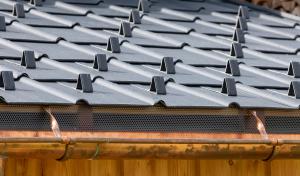Evaluating Gutter Guards for South Louisiana Homes: Investment Insights and Seasonal Benefits
Gutter guards may reduce clogging and ease maintenance under South Louisiana conditions”
PICAYUNE, MS, UNITED STATES, July 4, 2025 /EINPresswire.com/ -- Seamless Gutter Specialists, headquartered in Picayune, Mississippi, releases an in-depth evaluation on the cost-benefit considerations of installing gutter guards in South Louisiana. Intended to assist homeowners facing the region’s unique weather, foliage, and maintenance conditions, this analysis examines how guard systems address seasonal debris, rainfall intensity, and home protection.— Brandon Rayborn
Brandon Rayborn, owner of Seamless Gutter Specialists, points out that South Louisiana environments—characterized by heavy rainfall, pine needles, palm fronds, and periodic storms—pose specific challenges to gutter efficiency. “Gutter guards may reduce clogging and ease maintenance under South Louisiana conditions,” said Rayborn. “A comprehensive review helps homeowners evaluate whether the systems align with local weather patterns and property characteristics.”
1. Seasonal Debris Load in South Louisiana
South Louisiana landscapes produce heavy debris from vegetation, especially during fall and spring. Pine needles, Spanish moss, and palm fronds can accumulate rapidly in uncovered gutters, leading to blockages that result in overflow, foundation damage, or soffit rot. Gutter guard systems are engineered to prevent large debris from entering the gutter channel while allowing water to enter and flow freely.
Periodic gutter clogging requires manual cleaning every few months, particularly after storm seasons. Guard systems aim to decrease cleaning frequency by filtering debris on the surface. Understanding seasonal debris cycles helps homeowners estimate potential savings in labor and time.
2. Heavy Rainfall and Water Flow Capacity
South Louisiana typically experiences high-intensity rainfall events, often exceeding one inch per hour during storms. Gutter guards must support large volumes of water while maintaining debris filtration. Guard systems with high-flow capacity are often preferred over fine-mesh options that may clog quickly under heavy rain.
Effective guard systems channel water efficiently without creating backflow that could compromise fascia boards or roof edges. Several guard designs tested under simulated storm conditions have demonstrated capacity to handle over two inches of rainfall per hour — matching or exceeding regional peak flows.
3. Material Selection and Durability
Coastal environments introduce additional stressors such as UV exposure, humidity, and salt-laden air. Guard materials should resist corrosion and avoid brittle degradation over time. Common options include aluminum mesh, stainless steel screens, and polycarbonate covers. Viewpoint on viability shifts depending on climate exposure and expected lifespan.
Secured, grout-less installation methods reduce swelling and shifting—particularly important in regions subject to temperature changes between summer and mild winter weather. Guard systems with robust fastening and low profile contribute to longer-term stability and fewer repairs.
4. Maintenance and Inspection Requirements
Even with guards installed, periodic inspection is recommended. Surface debris may accumulate on top of guard screens, potentially limiting effectiveness. Annual removal of surface debris—followed by light cleaning—can maintain drain performance. Guard systems designed with lifted cover panels simplify access for inspections.
Guard manufacturers often recommend visual and tactile checks before and after hurricane seasons to address seasonal buildup. Such routines are generally less labor-intensive than full gutter cleaning, offering homeowners efficiency benefits.
5. Cost-Benefit Analysis
Investment in gutter guards involves upfront cost relative to regular gutter cleaning. Homeowners should compare system cost against the long-term savings from reduced labor, fewer gutter servicing contracts, and lowered risk of water-related damage.
Factors that influence payback timeframe include gutter length, home design complexity, proximity to trees, and DIY versus professional guard installation considerations. Case studies show simplified payback in high-debris areas exceeding eight gutters or significant tree coverage.
6. Storm Preparedness Considerations
During significant weather events, clogged gutters risk overflow that can compromise foundation weep points and grade draining. Gutter guard systems help ensure water flows away from the home, reducing potential issues post-storm. Storm-safeguarded gutters also support faster cleanup efforts by reducing volume of accumulated debris needing removal.
In coastal areas such as New Orleans metro, Terrebonne, and Acadiana parishes, guard systems designed for enhanced water handling may provide risk reduction and continuity benefits in storm recovery.
7. Retrofit Integration and Compatibility
Most homes feature pre-existing gutters requiring custom guard retrofitting. Proper evaluation of roof pitch, eave depth, and roofing materials ensures guard compatibility. Not all systems suit curved or ornate gutters common in historic South Louisiana architecture. Seamless installation techniques maintain system integrity and prevent voids vulnerable to debris entry.
Compatibility extends to accessories such as end caps, downspout screens, and rain diverters. Comprehensive system design helps preserve performance over multi-gutter runs.
8. Warranty and Service Options
Gutter guard warranties typically cover clogging, material degradation, and fastening failure over a 10- to 20-year period. Service agreements may include periodic inspections, debris clearing, and access to guard warranties through installation provider networks.
Above-tile or concealed fastening systems often avoid reliance on roof sheathing attachment, reducing infiltration risk. Insurance coverage and compliance documentation may be simplified through guard installation records.
Rayborn highlights that homeowner decisions benefit from tailored evaluation rather than blanket assumptions. “Home and landscape characteristics vary widely; consideration of local debris patterns and gutter complexity helps determine whether a guard system makes financial and functional sense,” said Rayborn.
Morgan Thomas
Rhino Digital, LLC
+1 504-875-5036
email us here
Visit us on social media:
Facebook
Legal Disclaimer:
EIN Presswire provides this news content "as is" without warranty of any kind. We do not accept any responsibility or liability for the accuracy, content, images, videos, licenses, completeness, legality, or reliability of the information contained in this article. If you have any complaints or copyright issues related to this article, kindly contact the author above.


